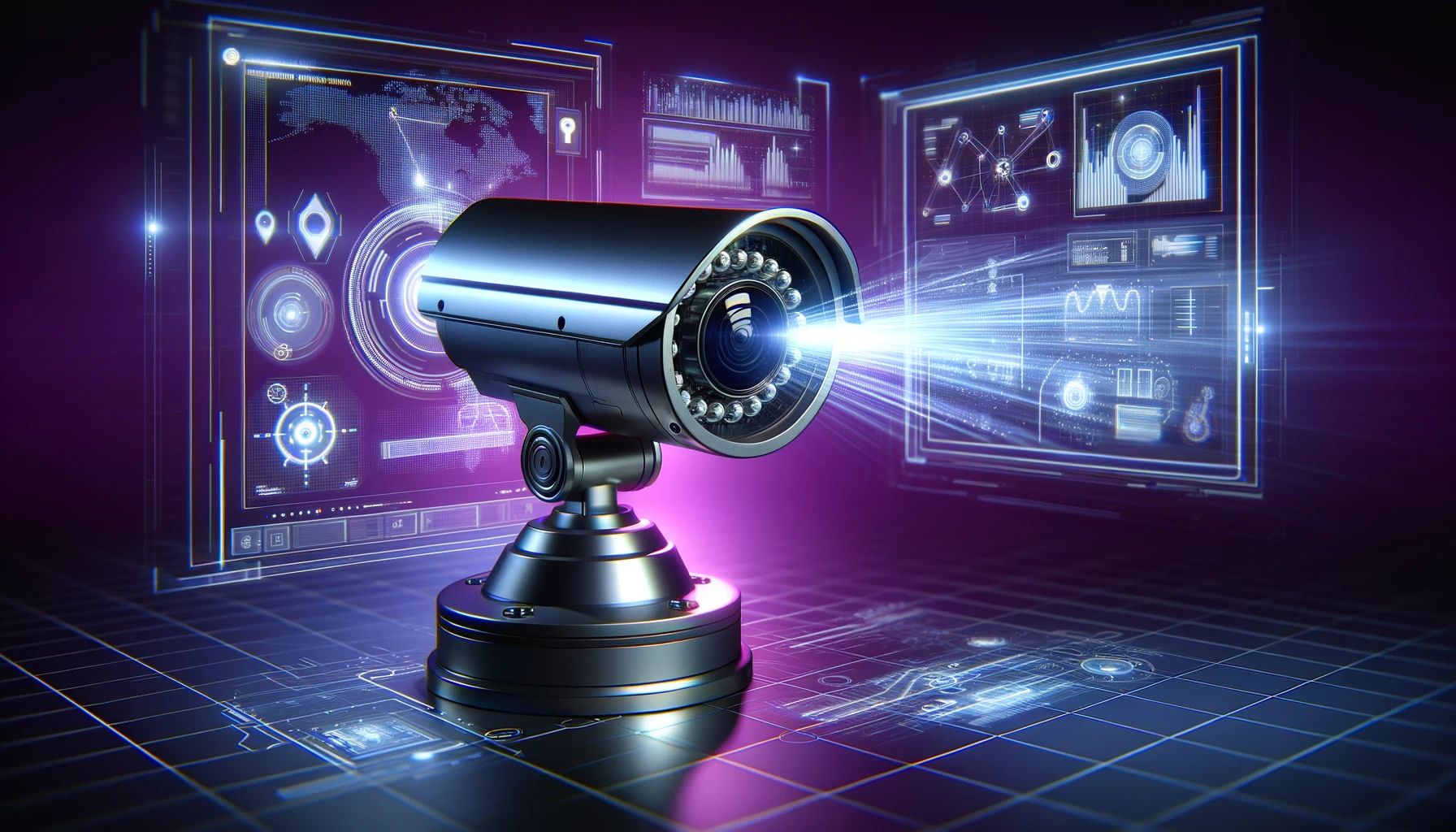Exploring Top 7 Security Technologies: A Comprehensive Guide

Security technologies encompass a wide array of tools, systems, and practices aimed at safeguarding assets, information, and people from various threats and risks. These technologies span both physical security, such as video surveillance and access control systems, and cybersecurity, which focuses on safeguarding digital assets and networks. The importance of security technologies cannot be overstated, as they play a critical role in protecting individuals, organizations, and nations from security breaches, unauthorized access, and other vulnerabilities. Whether it's ensuring the safety of physical premises or defending against cyber threats, a well-implemented security technology strategy is fundamental for risk management and mitigation.
Defining Security Technologies and Their Importance
Security technologies encompass a diverse range of tools and strategies employed to protect against potential threats and vulnerabilities. In the physical security realm, technologies like access control systems, video surveillance, and alarms are employed to safeguard physical assets and people. On the other hand, cybersecurity technologies focus on protecting digital assets, networks, and data from cyberattacks, data breaches, and unauthorized access. The importance of security technologies lies in their ability to provide a proactive defense against evolving risks. They aid in ensuring the integrity, confidentiality, and availability of assets, thereby enabling organizations to operate securely and with confidence. As technology continues to advance, the role of security technologies becomes increasingly critical in safeguarding information technology infrastructures and physical environments.
Evolution and Current Trends in Security Technologies
The evolution of security technologies has been marked by continuous advancements to address emerging threats. In recent years, several key trends have emerged in the security industry. Cybersecurity has gained prominence, with a focus on network security, cloud security, and data protection. Artificial intelligence and machine learning are being leveraged to enhance threat detection and response capabilities. Additionally, there is an increasing emphasis on proactive risk management and vulnerability assessment. The integration of physical and cybersecurity technologies is another notable trend, providing a holistic approach to security. As security technologies continue to evolve, they play a pivotal role in adapting to the changing threat landscape and ensuring the resilience of organizations and critical infrastructure.
Overview of Data Security Technology
Data security technology is a subset of security technologies that focuses on protecting digital information from unauthorized access, data breaches, and cyber threats. It encompasses a wide range of tools and practices, including encryption, authentication, access control, and network security measures. In an era where information technology underpins virtually all aspects of modern life, data security is paramount. The security industry continually innovates to address evolving challenges, such as the rise of cloud computing and the proliferation of connected devices. Ensuring data security is not only crucial for protecting sensitive information but also for maintaining trust with customers and complying with data privacy regulations. As the digital landscape continues to expand, data security technology remains at the forefront of safeguarding valuable digital assets and preserving the integrity of organizations and individuals alike.

Types and Applications of Security Technologies
Security technologies encompass a diverse range of types and applications, each tailored to address specific security concerns. Physical security technologies include video surveillance, access control systems, alarms, and biometric authentication. These tools are applied to safeguard physical assets, premises, and personnel. On the other hand, cybersecurity technologies focus on protecting digital assets, networks, and data from online threats and breaches. This includes encryption, firewalls, intrusion detection systems, and endpoint security solutions. The integration of these security technologies allows organizations to create a comprehensive security strategy that addresses both physical and digital threats. As the future of security continues to evolve, new security technology innovations emerge to enhance security measures, providing organizations with a range of options to secure their assets, data, and operations effectively.
Physical Security: Ensuring Physical Safety and Protection
Physical security technology plays a crucial role in ensuring the safety and protection of physical assets and people. This includes surveillance cameras that monitor premises, access control systems that regulate entry, alarms that provide alerts in case of unauthorized access, and biometric authentication methods for enhanced security. These physical security measures are applied across various sectors, including commercial, governmental, and residential environments. For example, top 7 security magazine identifies physical security technology as a critical component of risk assessments and security strategies. Cloud-based solutions and smart technologies are advancing physical security practices, allowing for remote monitoring and management of security systems. The integration of physical security technology with information technology security ensures a holistic approach to safeguarding assets and mitigating risks.
Cybersecurity: Safeguarding Against Online Threats
Cybersecurity technology is at the forefront of safeguarding against a myriad of online threats and data breaches. Information technology security encompasses a wide array of tools and practices, including encryption, firewalls, intrusion detection systems, and endpoint security solutions. These technologies are deployed to protect digital assets, networks, and sensitive data from cyberattacks, hacking attempts, and unauthorized access. As the digital landscape continues to evolve, cybersecurity becomes increasingly crucial. The rapid adoption of cloud-based solutions, the proliferation of connected devices, and the emergence of new security threats underscore the importance of robust cybersecurity measures. Security products and strategies are continually adapting to address these evolving challenges and ensure the integrity, confidentiality, and availability of digital assets. Cybersecurity remains a cornerstone of modern security practices, preserving trust and data security in an interconnected world.
Integration of Security Systems for Comprehensive Protection
The integration of security systems marks a significant advancement in security management. By combining physical security technology with information technology security, organizations can achieve comprehensive protection against a wide range of threats. Integration allows for centralized security management, real-time monitoring, and coordinated response to incidents. For instance, access control systems can be linked with cybersecurity measures to ensure that only authorized individuals have access to digital resources. This holistic approach enhances security practices, streamlines risk mitigation, and provides a more effective response to security incidents. The integration of security systems is becoming increasingly prevalent across industries, ensuring that security strategies are adaptable and resilient in the face of evolving security challenges.
Emerging Trends and Future of Security Technologies
The future of security technologies is marked by an ever-evolving landscape that adapts to emerging threats and vulnerabilities. From the latest security software to advanced security cameras, the security industry continuously seeks innovative solutions to address evolving security risks. These trends include the integration of physical and cybersecurity, automation of security operations, and the development of robust incident response strategies. With the growing adoption of new technologies and increased reliance on digital systems, effective security practices will play a pivotal role in safeguarding organizations, their data, and their operations. Staying informed about the latest security trends is essential for maintaining a resilient security posture.
Exploring the Advancements and Innovations in Security Technology
Advancements in security technology are transforming the way organizations protect their assets and data. From enhanced endpoint security solutions to more sophisticated security system integration, innovation is at the core of effective security measures. Encryption techniques are becoming more robust, bolstering data security, while automation streamlines security operations and incident response. Best practices in cybersecurity strategy continue to evolve, reflecting the dynamic threat landscape. As security technology and security practices advance, organizations must remain vigilant in adopting the latest security innovations to stay ahead of potential threats.
The Role of Cloud-Based Security Solutions in the Future
Cloud-based security solutions are shaping the future of security technology, offering scalability, flexibility, and cost-effective approaches to security management. Cloud-based security enables organizations to centralize security data and operations, enhancing visibility and control. It facilitates rapid updates and patches, ensuring that security measures remain up-to-date in the face of evolving threats. Moreover, cloud-based security solutions offer real-time monitoring and incident response capabilities, bolstering security of the network and data protection. As organizations increasingly migrate to cloud environments, the role of cloud-based security solutions becomes indispensable in safeguarding sensitive data and maintaining the resilience of security infrastructure.
Top Security Technology Trends Shaping the Industry
The security industry is witnessing several top trends that are shaping its landscape. These include the integration of physical and cybersecurity, with organizations recognizing the need for holistic security strategies that cover both digital and physical assets. Automation is streamlining security operations, enabling faster threat detection and response. Data encryption techniques are evolving to safeguard sensitive information effectively. Robust incident response capabilities are essential to mitigating security risks. Additionally, enterprise security is embracing the latest technologies to protect against emerging threats. The future of security technology and security practices hinges on staying abreast of these trends and adapting security measures to counteract evolving security challenges.

Best Practices and Recommendations for Implementing Security Technologies
Implementing security technologies effectively requires adherence to best practices and recommendations that reflect the ever-evolving threat landscape. It is essential to begin with an introduction to security, understanding that security involves both physical and digital aspects. To safeguard against different types of security threats, organizations must adopt a multi-layered approach that encompasses internal security, application security, and internet security. Staying informed about the latest security industry trends is crucial for maintaining a high level of security readiness. Regular risk assessments and audits help identify vulnerabilities and potential weaknesses in security measures. Emphasizing the importance of security is paramount, as even minor oversights can lead to serious security breaches. By prioritizing modern security technologies and surveillance solutions, organizations can enhance their security posture and protect against major security challenges.
Ensuring Effective Data Security Measures
Data security is a critical aspect of modern security practices. Effective data security measures encompass various strategies, including data encryption, access controls, and comprehensive security policies. Organizations must introduce robust security software and tools to safeguard data against cyber attacks and unauthorized access. Internet security measures are essential for protecting data as it travels across networks. Ensuring data security involves not only technical solutions but also employee training to raise awareness of security threats and best practices. By recognizing the level of security necessary for different types of data, organizations can tailor their data security measures accordingly. An ongoing commitment to data security is vital, as the risk of data breaches remains a constant threat.
Optimizing Security Practices and Solutions for Maximum Protection
To optimize security practices and solutions, organizations should begin by assessing their security management and risk assessment strategies. Implementing physical security measures, such as surveillance solutions and access control systems, is essential for safeguarding premises and assets. Combining physical security with cybersecurity measures creates a comprehensive security framework. Leveraging the latest security technologies must align with organizational objectives and risk profiles.
Security Management and Risk Assessment Strategies
Continual monitoring and assessment of security measures ensure that they remain effective and adaptable to evolving threats. Optimization of security practices involves staying informed about major security incidents and industry trends to make informed decisions and adjustments as needed. By striving for maximum protection, organizations can reduce their exposure to security risks and enhance their overall security posture.
The Intersection of Security Technologies and Information Technology
The intersection of security technologies and information technology (IT) represents a critical nexus in modern cybersecurity efforts. Information technology encompasses the management and utilization of digital assets, while security technologies are responsible for safeguarding those assets against a myriad of security threats. The best security practices involve the seamless integration of security protocols and technologies within IT infrastructure. This entails implementing reliable security technology products, such as firewalls, intrusion detection systems, and access control measures, to protect against data loss, covert surveillance, and cyber attacks. Organizations must recognize that the relationship between security technologies and IT is symbiotic, with each reinforcing the other's effectiveness. As technology advances, the intersection of security technologies and information technology becomes even more critical, as it ensures the preservation of data integrity, confidentiality, and availability.
Understanding the Relationship Between Data Security and Information Technology
The relationship between data security and information technology is inherently intertwined, as data is at the heart of IT operations. Data security measures are implemented to protect data from breaches and cyber attacks, ensuring that it remains uncompromised and confidential. Security technologies used in information technology include encryption, authentication, and access control systems. Encryption plays a pivotal role in data protection by rendering sensitive information unreadable to unauthorized parties. Authentication mechanisms, such as biometric security and secure login credentials, verify the identity of users seeking access to data. Access control and video surveillance systems are integral components of data security, providing monitoring and control over data access. In essence, data security and information technology work in unison to maintain the security and integrity of an organization's digital assets.
Exploring the Role of Encryption and Authentication in Data Protection
Encryption and authentication are fundamental components of data protection in the realm of security technologies. Encryption involves the transformation of data into an unreadable format using algorithms and encryption keys. This process ensures that even if unauthorized parties gain access to encrypted data, they cannot decipher its contents without the corresponding decryption keys. Authentication, on the other hand, verifies the identity of users attempting to access data or systems. This can be achieved through various means, including biometric security measures such as fingerprint or facial recognition, or through traditional username and password combinations. The role of encryption and authentication in data protection is to establish a robust defense against data breaches and cyber threats, ensuring that only authorized individuals with the appropriate credentials can access sensitive information.
Future Implications of Security Technologies in Information Technology
The future implications of security technologies in information technology are profound and far-reaching. As security threats continue to evolve, the integration of advanced security measures becomes imperative. Emerging technologies, such as artificial intelligence and machine learning, are being leveraged to enhance threat detection and response capabilities. The evolution of security technologies will shape the future landscape of information technology, influencing how organizations manage digital assets, protect against cyber threats, and ensure data privacy. As the relationship between security technologies and information technology evolves, it will redefine best security practices and necessitate a proactive and adaptive approach to safeguarding digital resources. Ultimately, the future implications of security technologies in information technology underscore the critical role they play in the modern digital age, preserving the security and integrity of data and systems.
Introducing Bizaar.ai
Discover the future of IT hardware solutions with Bizaar.ai, your ultimate tech-driven wholesale partner. Catering to resellers, retailers, and businesses of all sizes, our platform offers an extensive range of top-quality products, from advanced displays and networking equipment to cutting-edge printers and security systems. Experience a smart and efficient browsing journey, tailored to meet your evolving needs. With competitive pricing, expert support, and a customer-centric approach, Bizaar.ai is dedicated to empowering your business's success. Join us at Bizaar.ai and elevate your tech experience today!
Popular Categories
Networking Hardware : Access Points | Routers | Switches | Antennas | Fiber Networks | ISP Wireless Systems | Wi-Fi 4 (B/G/N) | Wi-Fi 5 (AC) | Wi-Fi 6 (AX) | Wi-Fi Adapters & Extenders | 4G/LTE/5G Wi-Fi Routers | ADSL Routers | Cloud Core Routers | Ethernet Routers | Other Routers | Wi-Fi Routers | Industrial Switches | Managed PoE Switches | Managed Switches | OS Consoles & Controllers | Unmanaged PoE Switches | Unmanaged Switches | Horn Antennas | Omni Antennas | Parabolic Dish Antennas | Sector Antennas | Twistport Adaptors | SFP Modules | Carrier Backhaul | Integrated CPE | Integrated Sector | Outdoor Radio | Network Security | Dedicated Firewalls
Computers: Laptops | All-in-Ones | i3 Laptops | i5 Laptops | i7 Laptops | i9 Laptops | Celeron, Pentium & Core Laptops | i5 AIOS | i7 AIOS
Printers & Scanners: Printers | Special Format Printers | Inkjet Printers | Inktank Printers | Laser Printers | Dot Matrix Printers | Thermal Printers & POS
Displays: Monitors | Projectors | Curved Monitors | LED Monitors 20" - 22.9" | LED Monitors Above 23" | LED Monitors Below 20"
Components & Storage: Components Memory | Graphics VGA Cards | DDR4 RAM | Hard Disk Drives | Solid State Drives
Gaming : Gaming Accessories | Gaming Headsets | Gaming Graphic Cards
Peripherals : Gamepads | Keyboards | Mouse | Headsets
PowerSolutions : PoE Injectors | Power Accessories UPS
Ruijie | Mikrotik | Ubiquiti | HPE Networking Instant On | Cudy | Slim | RF Elements | TP-Link | HP | Canon | Epson | Dell | Lightwave | Lenovo | Asus | AFOX |TeamGroup | HTC | Fortinet | Sonicwall | Zebra | Datalogic | Honeywell | Eaton | EVGA | MSI | PNY |Cooler Master | Cisco | Aruba | Logitech |UNV | Jabra | Yealink | Dinstar | Fanvil | Dahua | Easypos | ViewSonic | Engenius | Logitech | Bixolon | Gigabyte
 AED
AED 
